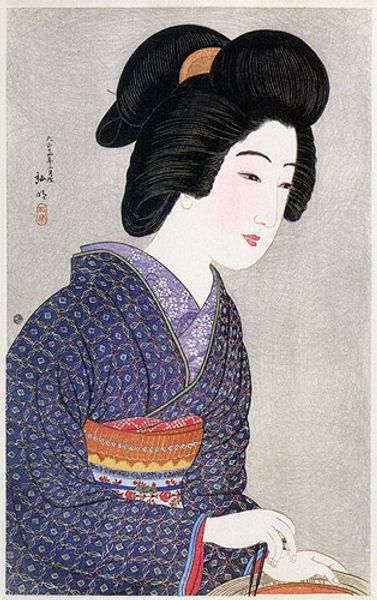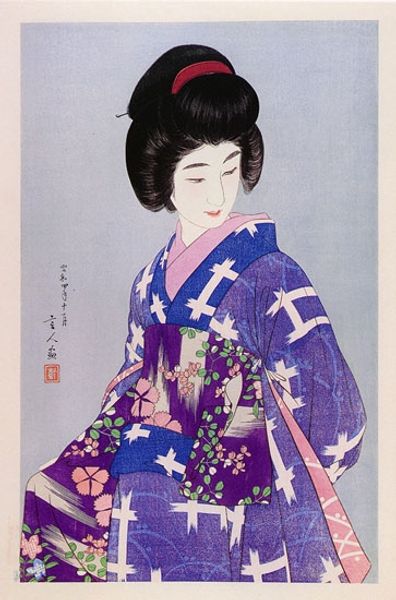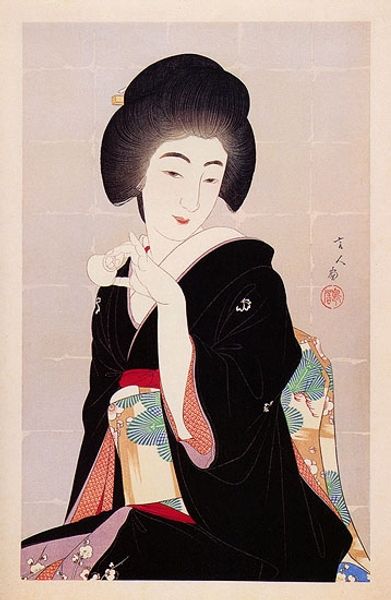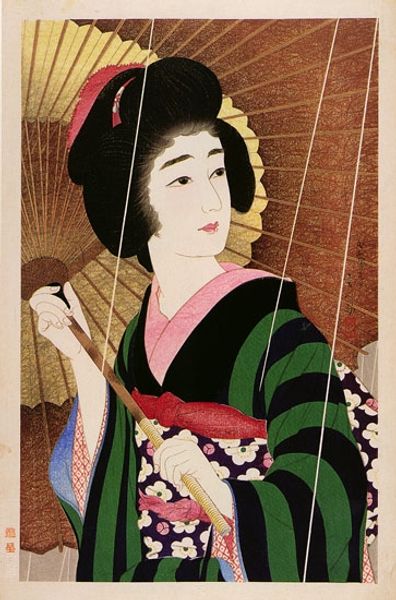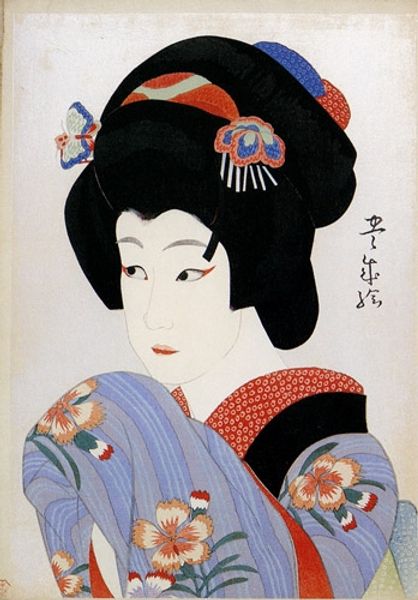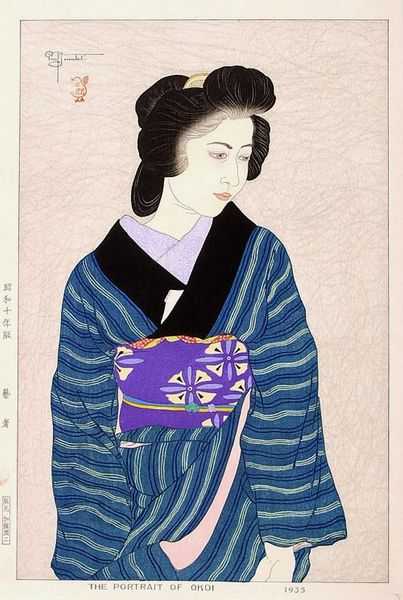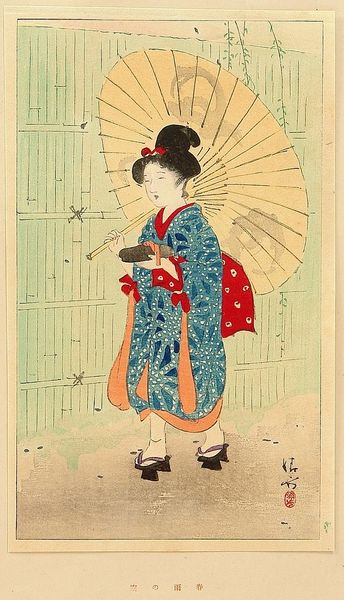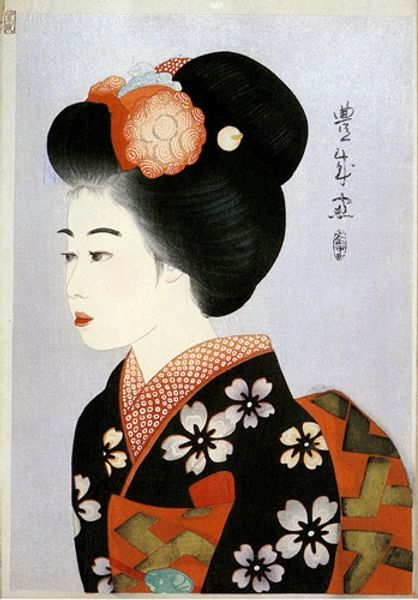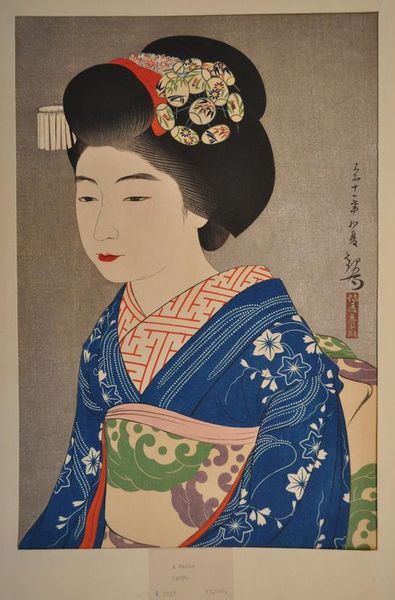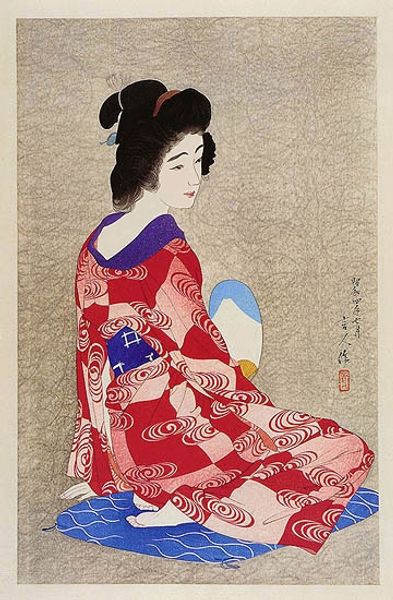
Copyright: Torii Kotondo,Fair Use
Curator: I find myself captivated by Torii Kotondo’s “Snow,” a woodblock print from 1929. It exudes such quiet melancholy. Editor: Yes! The woman looks almost mournful as she gazes out the window. What do you see in this piece? Curator: Well, beyond its surface beauty, this print engages with complex social realities. Consider the *bijin-ga* tradition within *ukiyo-e*. It often idealized women, particularly courtesans, but through whose gaze? Kotondo, working in the early 20th century, attempts to give agency back to the female subject. Notice the composition; she’s indoors, separated from the world outside, which hints at confinement. Yet, she meets our gaze, contemplative and self-aware. Is it sadness, or resilience we are seeing? Editor: That's such a good point! I didn’t think about it from the woman’s perspective, but instead was reading it more for her feelings of ennui. Does the snow itself add to that feeling? Curator: Exactly! The snow serves as both a beautiful backdrop, typical of *ukiyo-e* landscapes, and a symbolic barrier. But Kotondo’s active engagement in feminist circles makes me interpret the image in terms of patriarchal oppression. The beauty can distract if we allow it. How does that affect your view? Editor: Wow, that's a lot to think about! I appreciate you drawing out how art historical context informs a deeper interpretation. Curator: Art reflects life but also reshapes it. Examining artwork in its historical context reminds us of struggles and aspirations. Editor: Absolutely, I learned how historical context influences perspective, enriching understanding. Thank you.
Comments
No comments
Be the first to comment and join the conversation on the ultimate creative platform.
